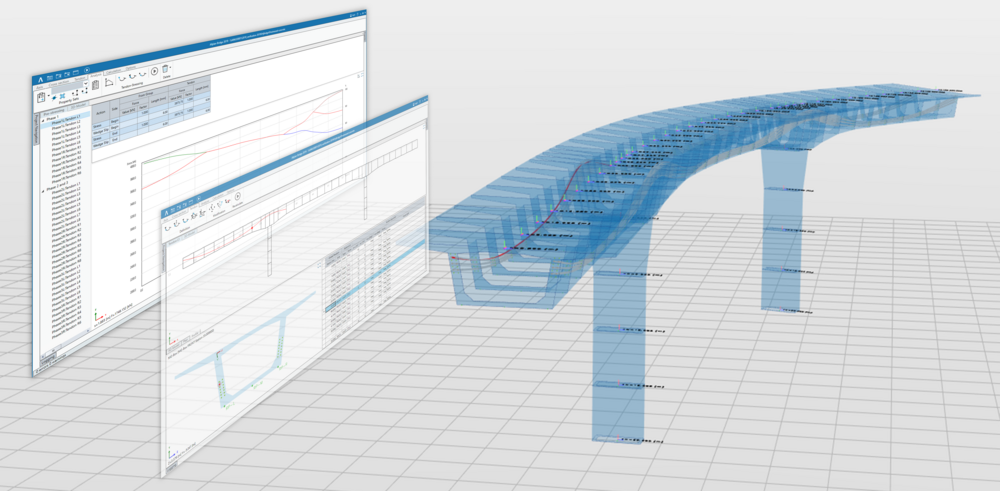New version focuses on Prestressing Tendons
Munich, 15 October 2018 – ALLPLAN, an international provider of open solutions for Building Information Modeling (BIM), announces today the most recent version of its parametric 3D modeling software Allplan Bridge 2019. Allplan Bridge is the powerful BIM software specially tailored for bridge engineering. Even complex geometries with a high level of detail can be easily created. The new version features several improvements such as sophisticated functionality for considering post-tensioning tendons.
“Prestressed bridges are a widely-used type among concrete bridges. Especially post-tensioning which has demanding requirements for proper modelling and management. The appropriate consideration of prestressing tendons and ducts is a relevant feature of any BIM solution for bridges. For this reason, we have focused the new version of Allplan Bridge on parametric tendon planning functionality”, comments Vanja Samec, Managing Director of ALLPLAN Infrastructure.
What’s new in Allplan Bridge 2019?
Prestressing made simple
Allplan Bridge 2019 makes it easy to model a wide range of types of pre-stressing: with immediate or later bond, internal and external, longitudinal, transverse and vertical, as well as with non-standard geometry. Based on user-defined 3D points, the program automatically generates the geometry of a tendon along the bridge structure. Each 3D Tendon point is specified by the position along the axis, and the position in the cross-section in relation to a reference point. In addition, direction angle and curvature radius of the tendon can be specified in each point. Selective parameters can be defined as variable. When calculating the detailed tendon geometry, the program determines these values automatically, using an intelligent algorithm minimizing the friction losses in the stressing process. A special point grid is available in the cross-section to ease the specification of the tendon position in the cross-section plane. This point grid facilitates copying and mirroring of the tendon in longitudinal and transverse direction.
Save time with parametric object placement
Objects from the Allplan Engineering library can be referenced in Allplan Bridge 2019 to add further details such as lamp posts or anchor devices of tendons to the bridge model. To do this, reference points are defined in Allplan Bridge, using variables along the bridge. These points are linked to the object in the Allplan library using the respective name. When the parametric model is transferred to Allplan Engineering, the corresponding objects are positioned at these reference points. The position of these objects is automatically adjusted whenever the model is updated.
Planning stressing sequences in Allplan Bridge
A stressing sequence can be defined for each tendon specified in the model. Stressing, wedge slip, and releasing are available actions. These actions are carried out at the beginning of the tendon, at the end, or at both sides simultaneously. To optimize the management of tendon stressing, the sequences of stressing actions are stored as named “stress groups”. The tendons are assigned to the corresponding group via Drag&Drop, and automatically stressed in accordance with the group definition. In addition, the values can be adjusted individually for each tendon.
Availability
Allplan 2019 with Allplan Bridge 2019 and a free 30-day-trial-license are now available for download.
Further information about Allplan Bridge: www.allplan.com/bridge
Press contact
Design Data Corporation dba ALLPLAN
Lacey Brummer
Tel.: +1 (402) 441 4013
lbrummer[at]allplan.com
